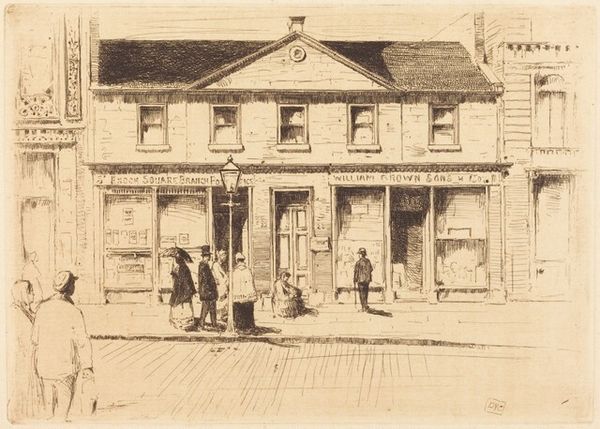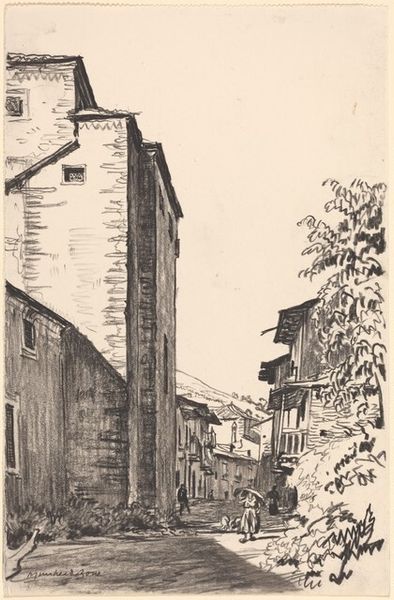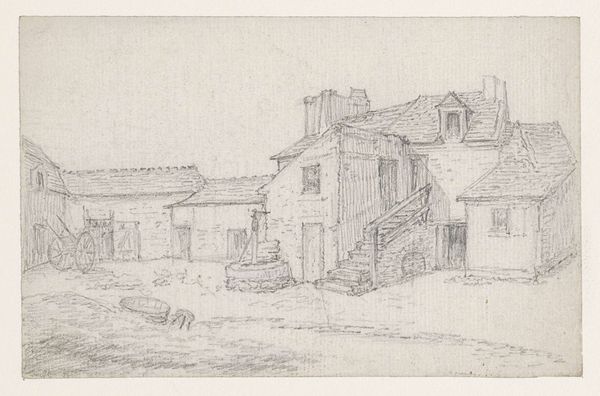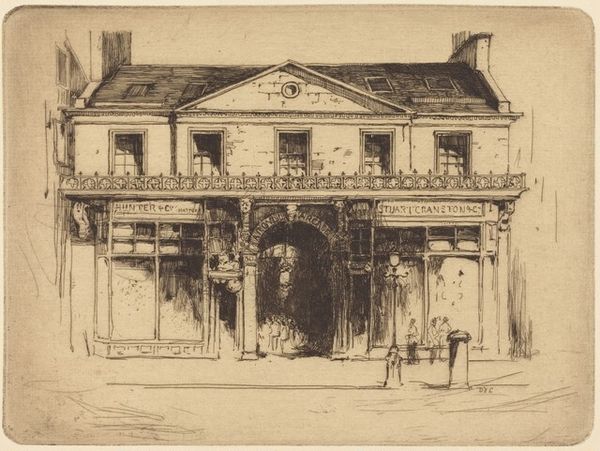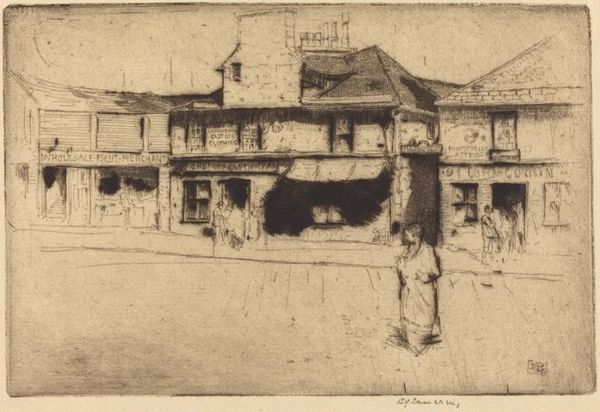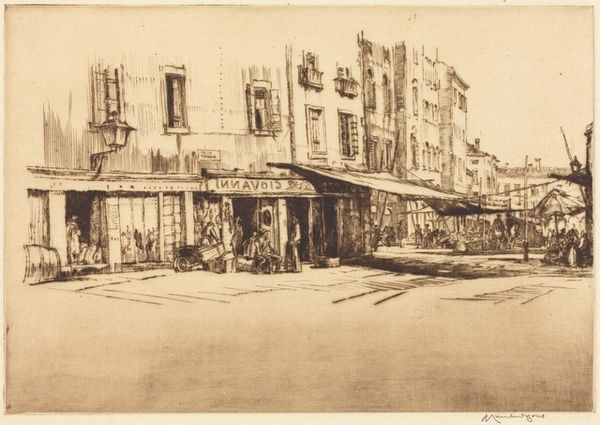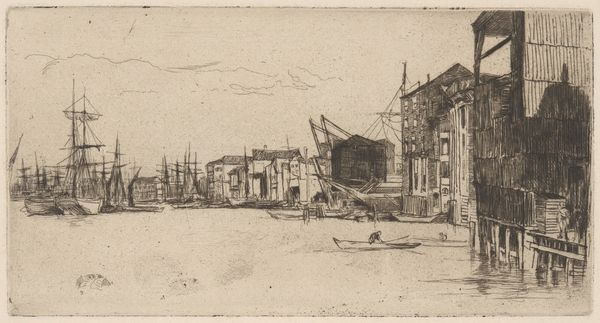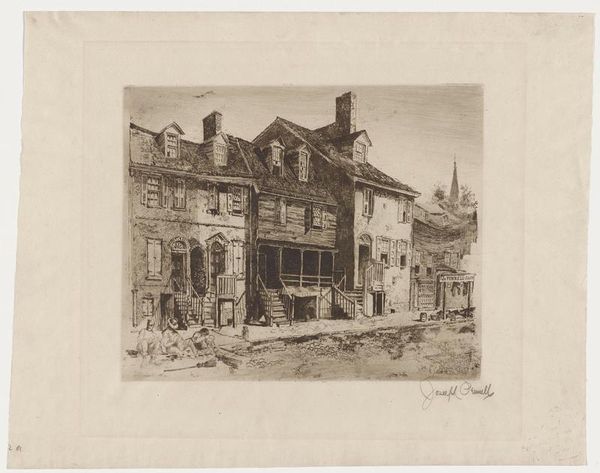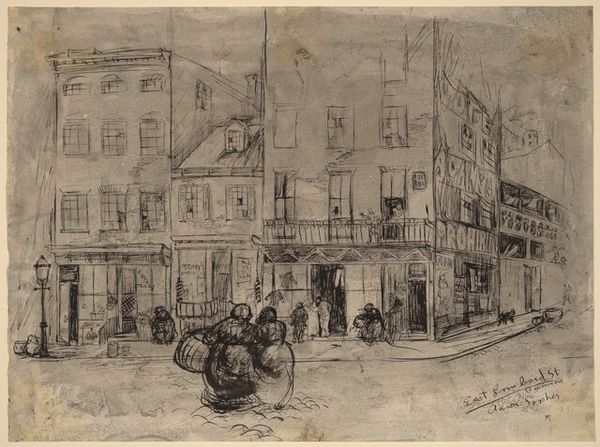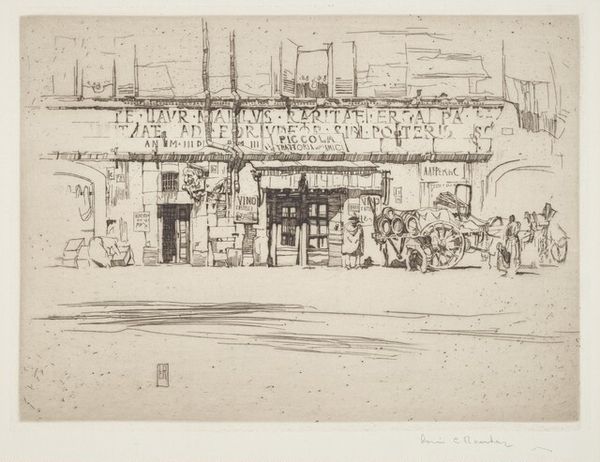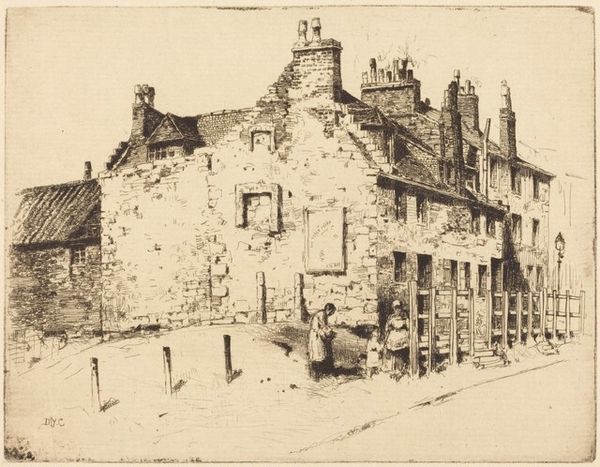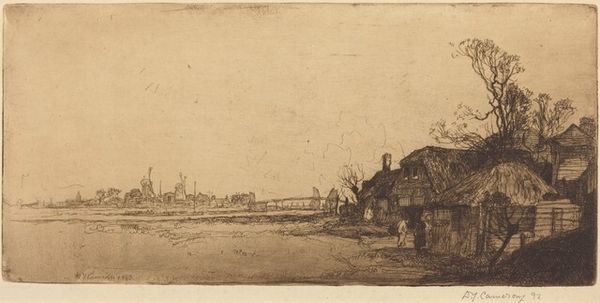
drawing, print, etching, intaglio, architecture
#
drawing
# print
#
etching
#
intaglio
#
etching
#
cityscape
#
architecture
Copyright: National Gallery of Art: CC0 1.0
Curator: Ah, I feel a melancholy quietness radiating from this cityscape, almost like a faded memory. Editor: Indeed. This is "Wellfield House, Anderston" by David Young Cameron, created in 1891. It’s an etching, and intaglio print—a glimpse into late 19th-century urban life rendered with remarkable detail. Curator: The texture is incredible! It makes you want to run your hand across those aging facades. And that soft, brown patina… I wonder what it would be like to stroll along those streets myself. Editor: Consider how Cameron deployed etching. The lines are created through a labor-intensive process. Acid bites into a metal plate, painstakingly drawn upon. This allows for such detailed textures and that exquisite line variation. What social forces might be at play as etching emerged? Here you have the burgeoning middle class eager to display "high art" at reasonable costs as printmaking scaled in its popularity and distribution. Curator: The figures seem almost spectral, faded, yet anchored in their daily routines. Who were these ordinary people whose lives intersect in front of the building and shop? Are they inhabitants, merchants, or simply passersby? Editor: The etching technique does lend a sense of ethereality. It contrasts starkly with the permanence of stone. Note the compositional elements. The architecture dominates; people exist merely in support. A study of "the built" perhaps mirrors and affects the "unbuilt" aspects of human experience: human relationships, community ties, daily rituals of this time and place. Curator: Right. There is this beautiful symmetry broken subtly—imperfect human interaction softening the hard, angular world. You see lives unfolding despite the rigidity. I wonder what narratives were commonplace, hidden away behind brick and mortar? Editor: The use of intaglio contributes significantly to the print's perceived value. Each impression taken from the plate is made physical through the manual application of pressure. The artist mediates and participates in labor and consumption by using intaglio printing to enhance its worth. I like your sentiment concerning narrative possibilities, though! Curator: The work allows for such musings… What stories would Cameron say the etching has given to you if you were able to converse with him now? Editor: What began as documentation has become an artifact itself, speaking volumes about production, perception, and enduring historical witness. Curator: It makes you appreciate that every layer, whether consciously made or unintentional, is the piece's contribution.
Comments
No comments
Be the first to comment and join the conversation on the ultimate creative platform.
